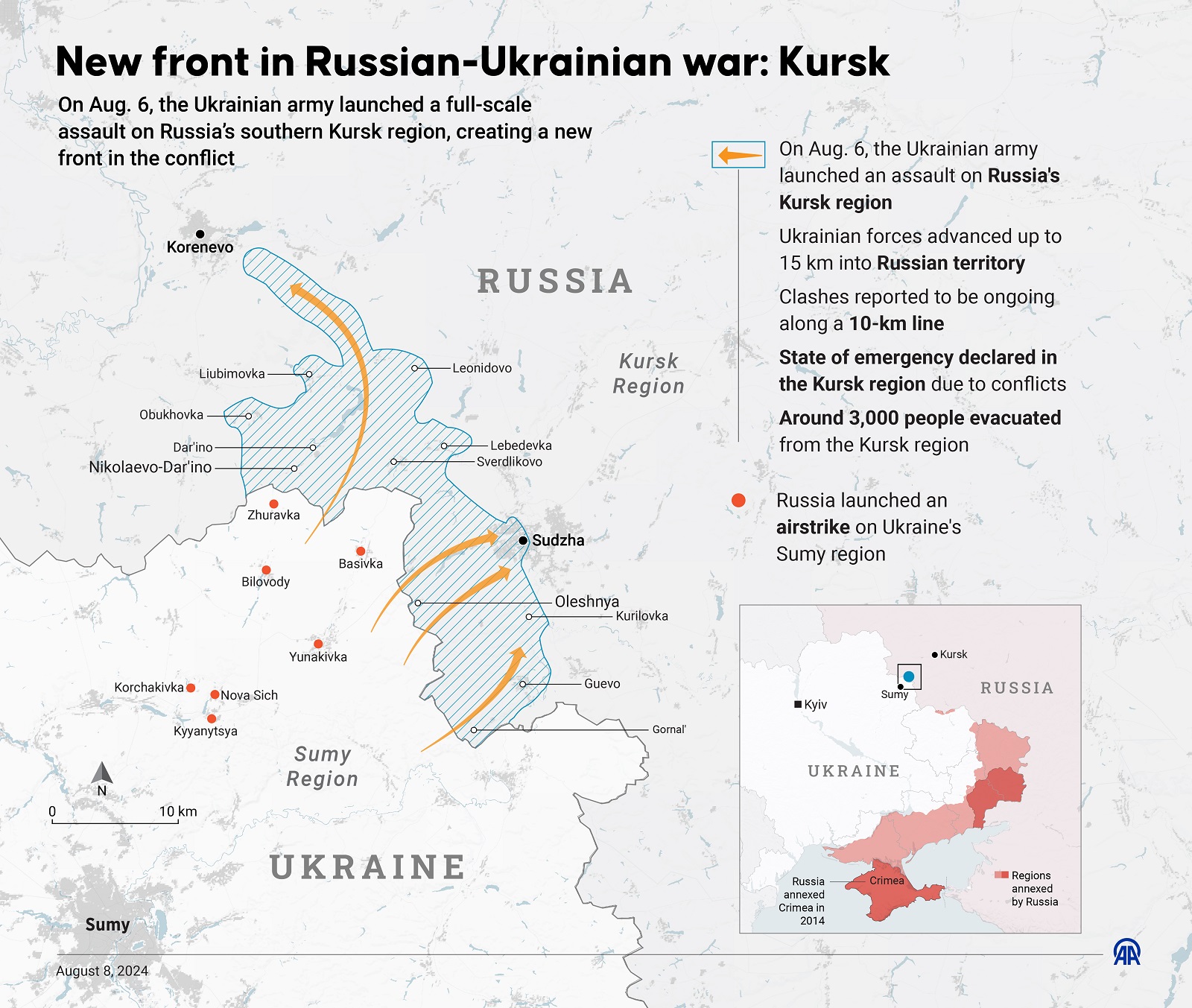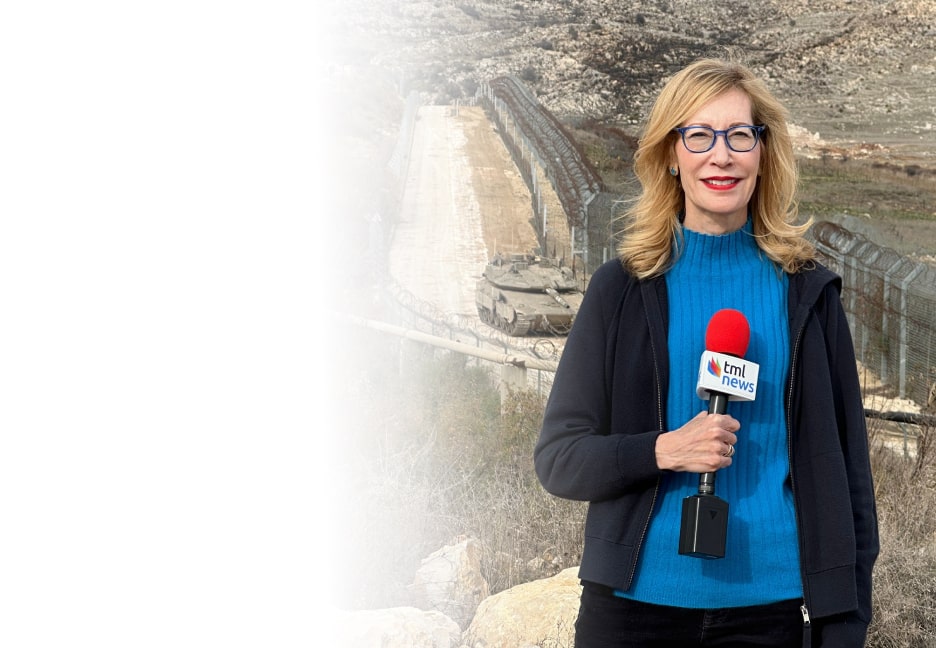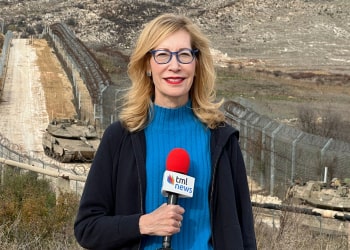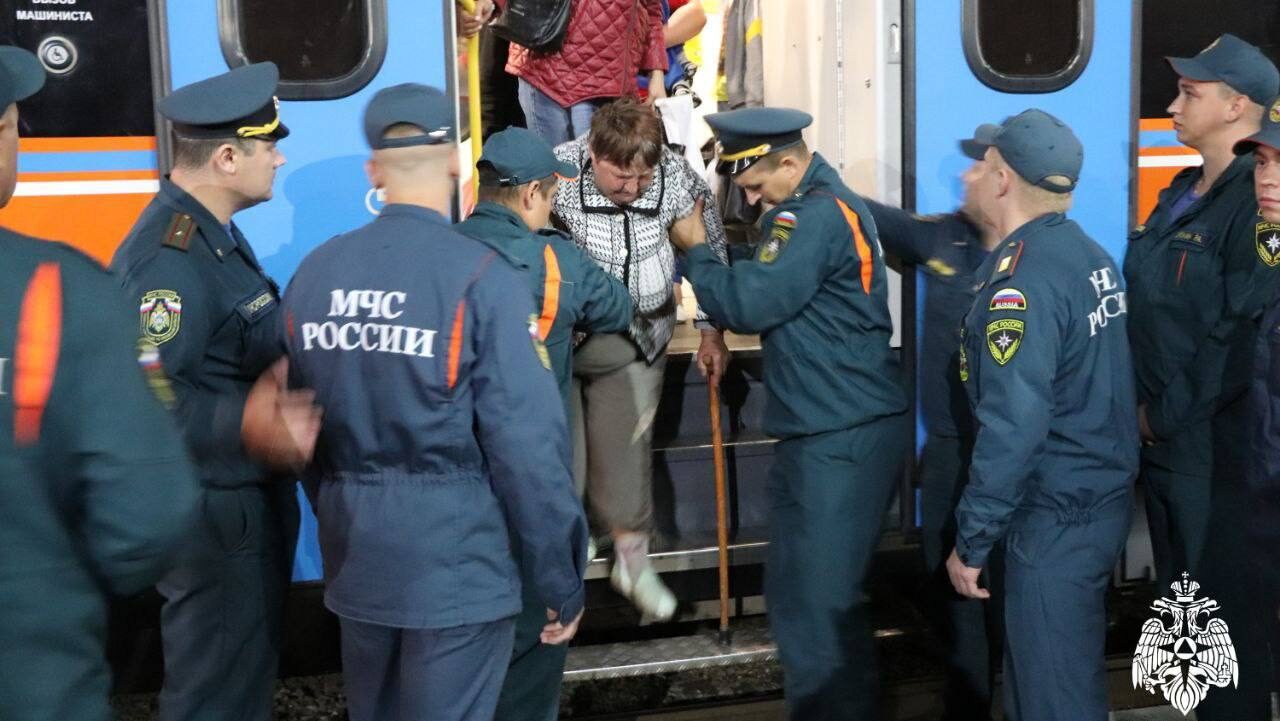Ukrainian Forces Strengthen Offensive by Entering Russia’s Kursk Region
Strategic advances target vital infrastructure, forcing Russian retaliation as Ukraine gains ground and Western support
Ukrainian forces entered Russia’s Kursk region on the night of August 5-6, marking a significant escalation in the ongoing conflict. According to reports from the Russian Defense Ministry and various Russian Telegram channels, Ukrainian troops captured a section of Russia’s border territory and advanced several dozen kilometers inland. Fierce fighting is ongoing in the Korenevsky and Sudzhansky districts, strategically important areas housing the Sudzha Gas Measuring Station, where Russian natural gas enters Ukraine’s gas transmission system en route to the European Union. The Kursk Nuclear Power Plant is also located in this region.
In response, Russia has deployed tank units to the region and initiated counterterrorism operations to stabilize the situation. Reports indicate that Ukrainian forces are digging in on the territories they’ve occupied, aiming to create fortified positions. Additionally, Ukrainian forces have shot down a Russian Ka-52 helicopter, further complicating Russia’s efforts.
Russia has also notified the International Atomic Energy Agency that fragments of downed missiles were found at the Kursk Nuclear Power Plant on August 8, particularly near the radioactive waste processing complex.
On August 10, the Russian Defense Ministry claimed that Ukrainian losses since the beginning of the offensive amount to “up to 1,120 servicemen and 140 armored vehicles.” These figures, however, have not been independently verified.
Obituaries for Russian soldiers killed in the Kursk region have started appearing on social media. Families have launched an online petition demanding the withdrawal of conscript soldiers from the combat zones in the Kursk region. The petition, signed by 3,600 people since its launch on August 6, states: “We, the mothers of conscripted soldiers, ask you to remove them from the combat zones. They have no experience in military engagements, no weapons. Our territory is now under full-scale attack. Protect the lives of soldiers who are unprepared for military action.”
In response to the escalating violence, over 76,000 people have been evacuated from the border areas of the Kursk region. The Russian Emergency Situations Ministry has set up 60 temporary accommodation centers to house the displaced, with 24 of these centers located in the Kursk region and the rest in the Oryol, Moscow, Tula, Voronezh, Lipetsk, Kaluga, and Tver regions.

New front in Russian-Ukrainian war: Kursk. (Murat Usubali/Anadolu via Getty Images)
In a related development, Ukrainian naval and military intelligence forces launched an attack on a former offshore gas platform in the Black Sea, repurposed by Russian forces. According to a statement by the Ukrainian Navy’s spokesman on August 10, Russian forces were using the platform for GPS spoofing, which posed a threat to civilian navigation. The claims have not been independently verified, and Moscow has not yet issued a response.
Military expert Ian Matveev told The Media Line that the war on the front in Ukraine has reached a stalemate where both sides are assessing who has more strength and resources.
“For Ukraine, this is particularly challenging because it has fewer soldiers and equipment. Therefore, if Ukraine wants to liberate its territories and win, it needs to devise ways to break out of this deadlock and disrupt the vicious cycle,” he said.
Military analyst Yigal Levin added that the Ukrainian offensive in the Kursk region aims to draw Russian forces there.
“It can be assumed that one of the goals is to divert Russian troops to this area, and it’s working. There are reports, although unverified, that forces are being transferred even from under Volchansk, where Russia is engaged in battles in the Kharkiv region,” he told The Media Line.
This holiday season, give to:
Truth and understanding
The Media Line's intrepid correspondents are in Israel, Gaza, Lebanon, Syria and Pakistan providing first-person reporting.
They all said they cover it.
We see it.
We report with just one agenda: the truth.


The goal is to force the Russian army to spread its forces thin and strengthen Ukrainian defense
Matveev added: “The goal is to force the Russian army to spread its forces thin and strengthen Ukrainian defense, which will help stabilize the situation.”
He explained that Ukraine has now decided to try advancing in another area, where the Russian army does not expect an attack, to gain various strategic advantages, including the capture of territories that can be used in peace or other negotiations.
“Besides territorial gains, these actions also boost morale and show allies that the Ukrainian army is in good shape, even if there is some retreat on the Donetsk front. This is important to demonstrate that the conditions are tough, but the army remains strong,” he said.
“As for the timing of this operation, that decision lies with the General Staff. It’s possible that Ukraine has information about problems with Russia’s reserves, making this an opportune moment for an offensive,” Levin said.
Matveev also shared that Ukraine’s decision to launch a counteroffensive is linked to the fact that the Russian army is exhausted, which was already predicted in July.
“By autumn, their forces will be depleted, creating favorable opportunities for Ukrainian forces, which, on the contrary, are strengthening thanks to the training of reservists,” he said.
“The offensive was planned for August when the weather conditions are favorable, giving Ukraine two months to develop the situation in its favor. While the Russian army is losing strength, Ukraine is gaining new soldiers and using this time to advance.”
Matveev commented on the possible future scenarios of the operation.
“It includes the capture of a nuclear power plant or an advance toward Kursk, creating additional problems for Russia. It is also important to show that Putin will not react sharply to such actions, for instance, by using nuclear weapons, which would strengthen allies’ confidence in the need to fight him by all available means,” he said.
Matveev pointed out that Russia’s response to this operation has been predictably poor and slow.
“Russian authorities are indifferent to the residents of the Kursk region, which is why there was no immediate evacuation, and the border was not adequately secured, compounded by their inability to respond quickly to threats and redeploy troops effectively,” he said.
“We see that Ukrainian troops have destroyed a column near Rylsk, and Russian resistance remains weak. This allows Ukraine to control the pace of the offensive, and any delays are more likely due to their plans rather than Russian forces holding them back,” Matveev added.
“This offensive,” said Matveev, “while serious, will not lead to a sharp turning point in the war, but it may significantly weaken Russian pressure on Ukrainian positions on the main fronts, opening up the possibility of a Ukrainian counteroffensive.”
Levin pointed out that the Ukrainian attack benefits the country’s alliance with the West.
“German officials confirm that they do not oppose the use of German weapons on Russian territory, and this does not contradict Ukraine’s right to self-defense. Moreover, after the offensive in the Kursk region began, a new package of American aid to Ukraine was approved, showing that the West generally supports such actions,” he said.
The more aggressively and confidently Ukraine acts, the more support it will receive from the West
“The more aggressively and confidently Ukraine acts, the more support it will receive from the West. The West doesn’t want to invest in losers; it will support the winners and those who actively fight for their interests,” added Levin.
“I believe that the situation in the Kursk region is not the culmination, but part of a larger plan. We may see strikes in other regions as well,” said Levin.

